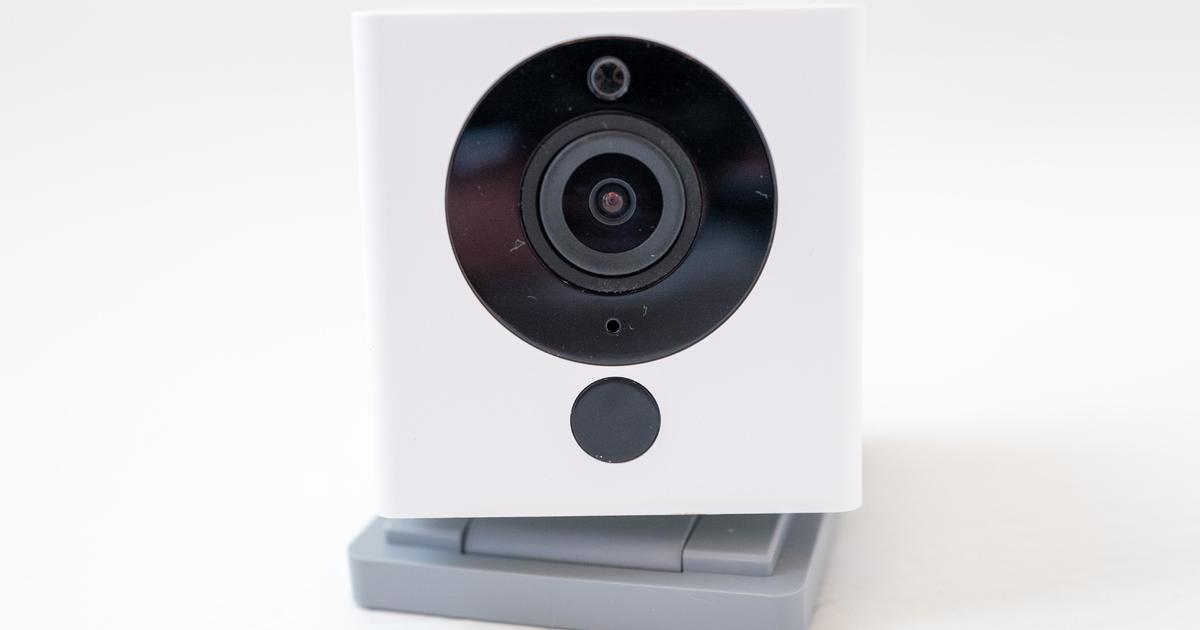CBS News
Wyze camera breach may have let 13,000 customers peek into others’ homes

Thousands of Wyze camera customers recently had images of their homes, and, in some cases video, made visible to strangers, due to “a security event,” involving third-party caching and crossed wires, the company said Tuesday on its user forum.
Wyze Labs, maker of smart home cameras, informed customers who experienced a service outage Friday that 13,000 camera users received video thumbnails of other people’s homes, according to an update posted by co-founder Dave Crosby.
“We can now confirm that as cameras were coming back online, about 13,000 Wyze users received thumbnails from cameras that were not their own and 1,504 users tapped on them,” the company explained.
Strangers viewed other customers’ enlarged thumbnail images, and in some cases, recorded event videos that were attached to them.
Screenshot/Reddit
The incident stemmed from a service outage related to a caching issue that “took down Wyze devices for several hours early Friday morning,” the company said in its email to clients, which it shared online . “If you tried to view live cameras or events during that time you likely weren’t able to.”
The outage caused a third-party caching client library to overload and “got wires crossed while trying to come back online,” the company said, adding, “As a result of increased demand, it mixed up device ID and user ID mapping and connected some data to incorrect accounts.”
As service was restored, happenings inside customers’ homes were inadvertently exposed to strangers, as users were shown images that didn’t belong to them.
The company said it has now added a new layer of verification to ensure users are only shown feeds that belong to them.
Wyze added that the incident doesn’t reflect its “commitment to protect customers” and that security is a “top priority” at Wyze.
On a Reddit forum dedicated to Wyze camera owners, some users that they were “watched by someone,” and that the company didn’t take sufficient responsibility for the incident, blaming it on a third party.
Wyze did not immediately respond to CBS MoneyWatch’s request for comment.
CBS News
Iranian operative charged for Trump assassination plot, court records reveal

Watch CBS News
Be the first to know
Get browser notifications for breaking news, live events, and exclusive reporting.
CBS News
Qantas plane makes emergency landing in Sydney

Watch CBS News
Be the first to know
Get browser notifications for breaking news, live events, and exclusive reporting.
CBS News
What the Fed rate cut means for HELOC interest rates

Getty Images/iStockphoto
Interest rates are heading down again, according to the Federal Reserve. On Thursday, the Fed issued another cut to its federal funds rate, the second in the last three months. Now at a range between 4.50% and 4.75%, the rate is down 75 basis points from where it was in early September and it could fall further again when the Fed meets for the final time in 2024 on December 17.
While these cuts will reduce what savers can earn with high-yield savings and certificates of deposit accounts (CDs), they will help borrowers who have been contending with higher rates on a variety of loan products. For those who are considering accessing their home equity now, or for those who already have a home equity line of credit (HELOC), this can be particularly advantageous. So what does the new Fed rate cut mean for HELOC interest rates? That’s what we’ll break down below.
See how low of a HELOC interest rate you’d qualify for here.
What the Fed rate cut means for HELOC interest rates
In short: The latest Fed rate cut is good news for HELOC interest rates and for those borrowers who have already decided to access their home equity with the line of credit. That’s because HELOC rates tend to follow the Fed more closely than other products. Mortgage rates, for example, influenced by factors like the 10-year Treasury yield, have not dropped as significantly as home equity loan rates have in recent months. But home equity rates more closely match the path that the federal funds rate takes, so if that’s declining HELOC rates will, too.
This can be seen clearly because HELOC rates change daily and are variable, meaning that the HELOC rate you saw listed on lender websites early this week is likely lower now and could be even lower next week. With an additional cut in December pegged at an almost 65% likelihood by the CME Group’s FedWatch tool, rates on HELOCs could fall further still. And if that likelihood increases based on additional economic considerations, lenders may start pricing in that reduction in advance of it being formally issued.
This is all positive news for both those who have yet to apply for a HELOC and for those who already have one. Since HELOC rates change monthly, current borrowers will likely see reductions in their upcoming payments and, unlike home equity loans, they won’t need to refinance to secure the lower, prevailing rate as HELOCs adjust independently with no action required on behalf of the borrower. For all of these reasons, then, and with the average amount of home equity particularly high currently, right now is a great time to open a HELOC.
What about home equity loan rates?
Home equity loan rates will also fall with this latest Fed cut, but it’s unlikely to be by the same increment the federal funds rate was cut by. Still, home equity loan rates are slightly lower than HELOCs now (8.41% versus the HELOC’s average of 8.70%). And home equity loan rates are fixed, meaning borrowers who take out a loan now won’t have to worry about any future rate volatility. At the same time, they won’t be able to capitalize on any additional rate cuts that are issued, either. So borrowers will need to weigh the risks of waiting versus the low rate they can lock in now to determine which is the best option for their unique financial situation.
The bottom line
A Fed rate cut, even in a small amount, is good news for all types of borrowers, but particularly for those who have or are considering a HELOC. Still, it’s critical to remember that rates on home equity products are lower than most alternatives because the home in question serves as collateral – and you could lose it if you don’t repay all that you’ve withdrawn. So go into the home equity borrowing situation clear-eyed and focused to avoid overborrowing from one of your most critical assets.
Have more HELOC questions? Learn more here now.





